Vertical gardening systems: Guide to start your vertical garden
Vertical gardening systems may offer a variety of advantages, including increased isolation, cooling, and shade, as well as the ability to build lush plants even in small spaces. In this article, let’s discuss vertical gardens and different types of vertical gardening systems. Also, read till the end to know about how to make a DIY vertical garden planter, the advantages, and disadvantages of vertical gardening, etc.
Also becoming more popular for larger installations, such as public spaces, apartment complexes, and commercial venues. Popular types include green walls, green facades, and freestanding vertical garden systems.
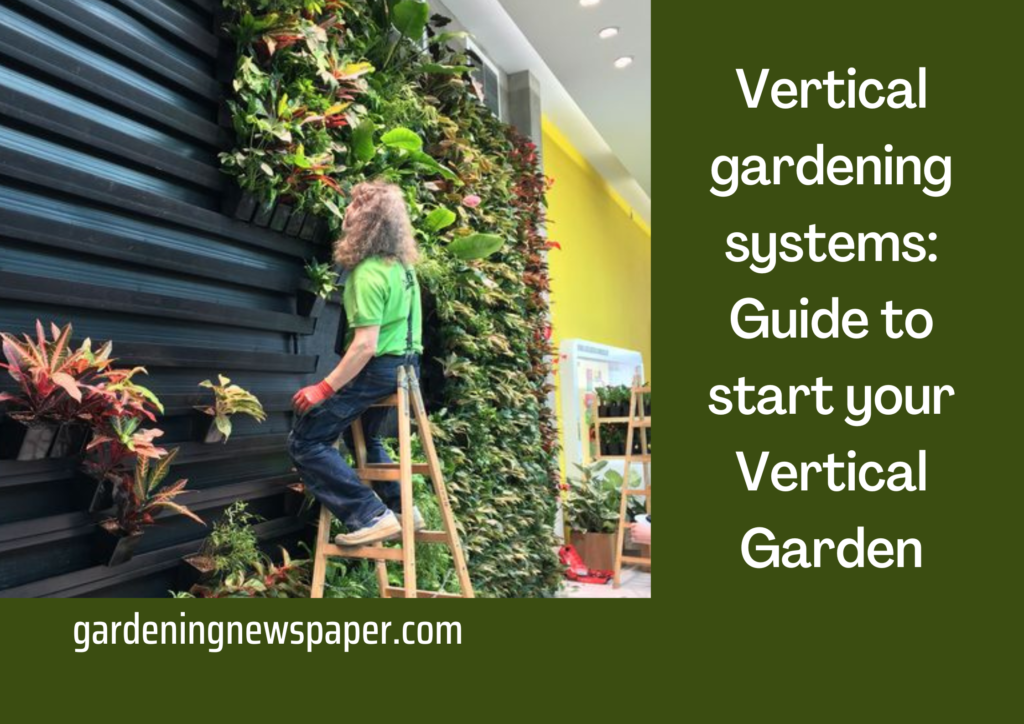
The loss of greenery in urban areas in the name of development has a direct physical and aesthetic influence on the quality of life. Vertical gardens are recommended for both interiors and, most importantly, the exteriors of an establishment. Every sort of site may be used to its greatest capacity by utilizing these gardening techniques, resulting in aesthetic valances that are helpful to the environment and human health.
Even if the cost of developing and maintaining vertical gardens is higher than that of a traditional landscape, the environmental benefits of increasing plant surfaces have an influence on lowering pollutants. The latest designs for landscape development are keen on employing any type of concrete or glass, transforming them into beautiful vertical gardens, overcoming the mess of urban development, and paving the way for a healthy green urban environment.
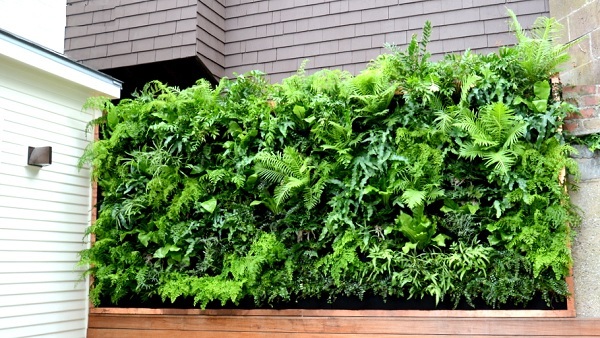
Vertical Gardening Ideas: Types of vertical gardening
Vertical gardens are very diverse and need only your love, attention, and creativity to create one. The most common types are green walls, green facades, and free-standing. Let us discuss each one in detail.
1. Green walls
Green walls (also known as “living walls”) comprise containerized plants or modular green panels that are arranged over a wall face. Herbaceous and shrub-like plants, as well as small trees, may be suitable for green wall plantings.
Green wall systems come in a variety of styles. Growing media for the plants, for example, is put into containers in a substrate-based system, and drip trays can collect water run-off. Link the plants in hydroponic systems to an inert medium, such as a felt mat or horticultural foam, which stores moisture for the plants to draw on.
Green walls can be either outdoors or can be used for indoor gardening as well, with differing requirements in terms of light, plant species, and other variables.
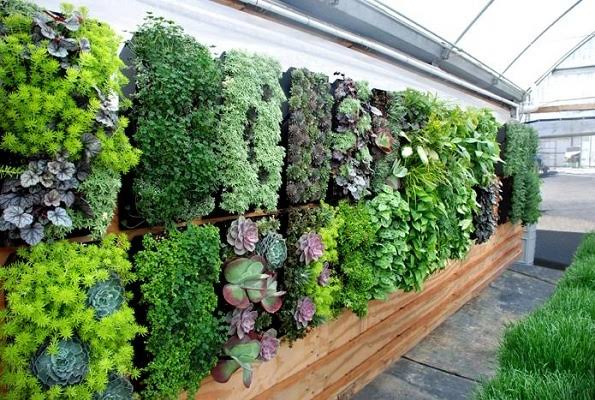
2. Green facades with plants
In contrast to green walls, green facades comprise climbing or scrambling plants that grow upwards or across a support structure such as a trellis. Common green façade plants include twiners like honeysuckle, tendrils like clematis, and scrambling plants like winter jasmine.
Green walls can have a variety of facades. Plants growing in the soil at ground level and linked to a trellis provide ground-based facades. People grow plants at different heights above ground in a facade-bound system, such as in wooden planter boxes. Stainless steel support systems are the best for green facades because of their longevity.
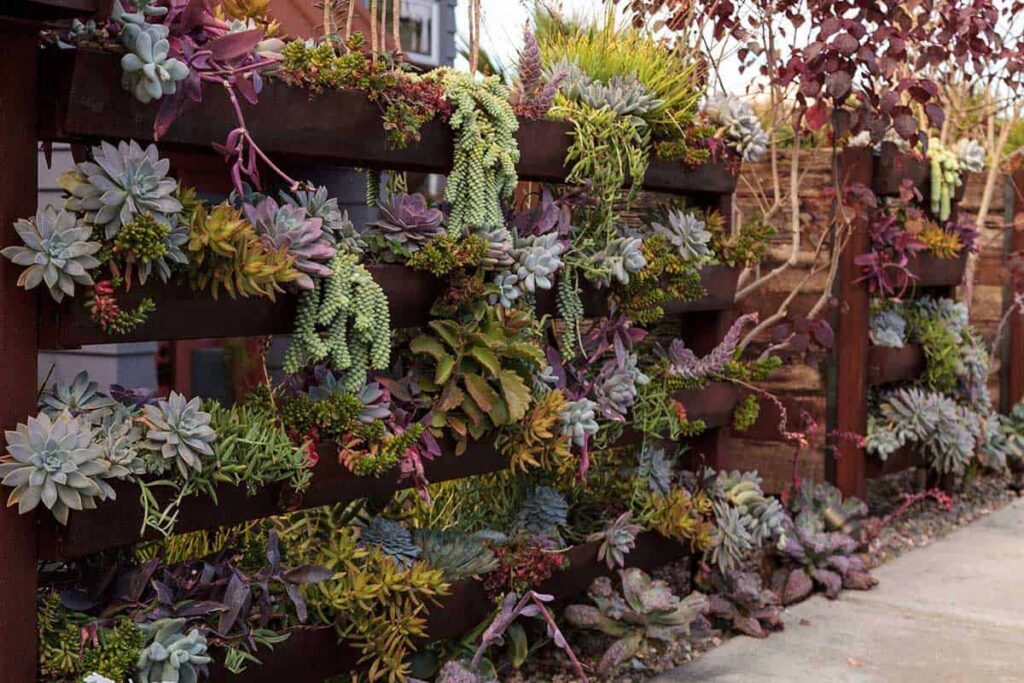
3. Freestanding vertical gardening systems
Around the world, freestanding vertical gardens are sprouting up in parks, gardens, and other public spaces. In these systems, people grow vertical plants and above on vertical garden frames. People may enjoy a pergola-like experience with this type of vertical garden system.
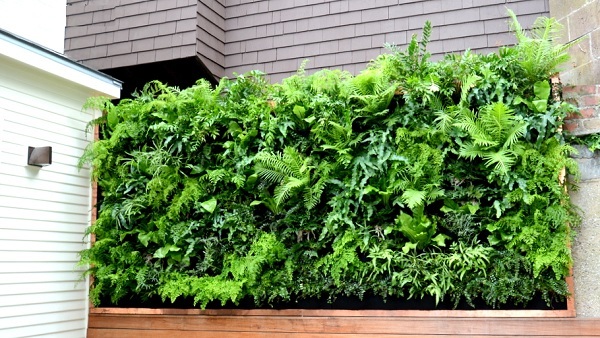
Wall Vertical Garden
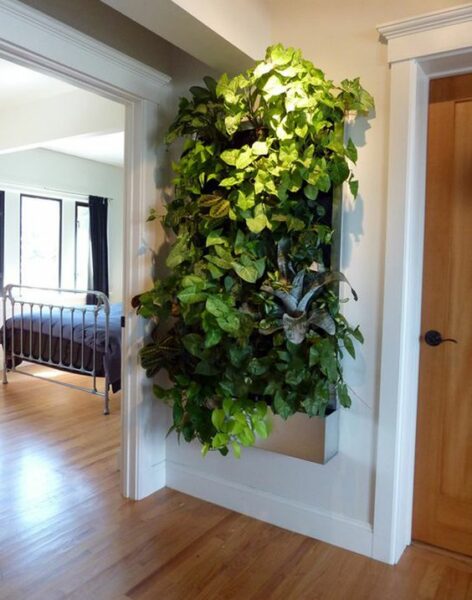
In a wall vertical garden, a strong framework is arranged, which is backed up against the wall by a waterproof membrane. A top-of-the-wall irrigation system supplies nutrients and water to the plants. And tada! Your vertical wall garden is done!
Indoor Vertical Gardening Systems

Well, a vertical garden is not just meant for the outdoors. But how to make indoor vertical garden? There are various methods for creating an indoor vertical gardening system like tower garden, hydroponics, vertically hanging pots, etc. The easiest, cheapest, and the most durable idea is the grid method with pots.
For this, weld strong metal rods into a grid. Now, weld the pot holders perpendicular to the grid as shown in the figure. Fix the metal grid to the wall, place the pots in the holders and watch them thrive!
Choosing plants for vertical gardening: How to choose the right plants?
Plants for the vertical garden systems should be dense, compact, and slow growing. Choose plant varieties that are suited for the aspect of the wall where they will grow. A sunny wall, for example, is perfect for some varieties of plants that need relatively less amount of water, whereas a shady location – may be beneath a pergola or porch – will have a variety of shade lovers, such as ferns.
Keep in mind that the bottom of the unit will keep more moisture than the top, so consider this when deciding what to plant where, apart from aesthetic preferences and the plant’s ability to thrive in a soilless, vertical environment.
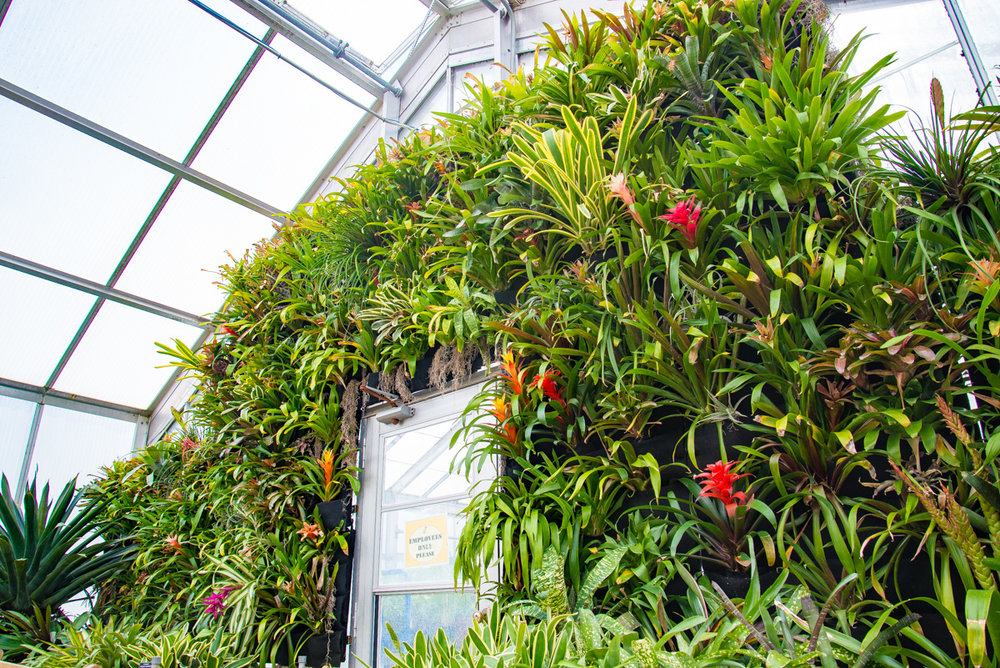
Advantages of building a vertical gardening system
Vertical gardens look amazing when arranged correctly, and completing the setup perfectly may provide you with a terrific sense of accomplishment. Even if you must make a small expenditure, your efforts will be repaid, particularly if you cultivate culinary herbs.
If you have a patio outside, you could even create a vertical garden to encircle it and give shade. This “green roof” will provide much-needed shade, especially during the hot summer months. The plants also serve as a soundproofing barrier and give isolation.
Vertical gardens may also help you maximize a small outdoor space, such as a balcony. However, before you begin building, you must check that the area receives adequate sunshine. Here are vertical gardening benefits in detail.
How to build a vertical garden planter
Although vertical garden planter is easily available for purchase, they can get expensive depending on the number of plants you have. So why not make one for yourself? Get yourself the materials from your nearest shop and get started.
- Untreated wooden boards
- Steel screws and hammer
- L-brackets
- Plant seedlings/seeds
- Weed matting
- Nail gun
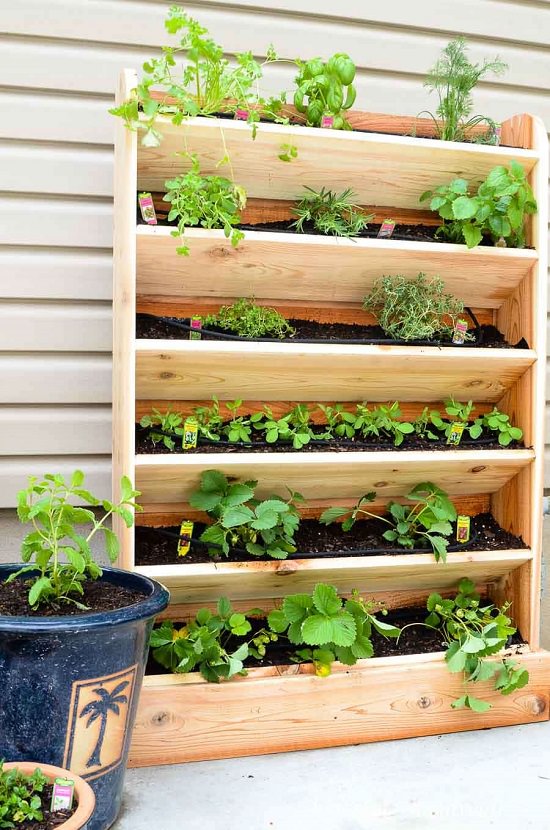
Instructions to build the green garden
- Thoroughly clean the wooden pallets with a pair of gloves. Remove any loose nails or damaged wood if you are recycling the ones which you already have.
- Attach planks from another pallet board to the bottom of each main pallet part. The extra planks will act as the planters’ foundation or as vertical gardening platforms.
- Use weed mats to line the bottom of each pallet. To keep them in place, use staple guns.
- Place your pallets against the wall and indicate where you want to attach L-brackets.
- Screw the pallet to the wall.
- Fill the pots halfway with the soil.
- Fill up the holes with plants.
DIY Vertical Gardening Systems
Here are some of the best ideas for DIY vertical garden planters that are easy to arrange and maintain.
Use open shelves.
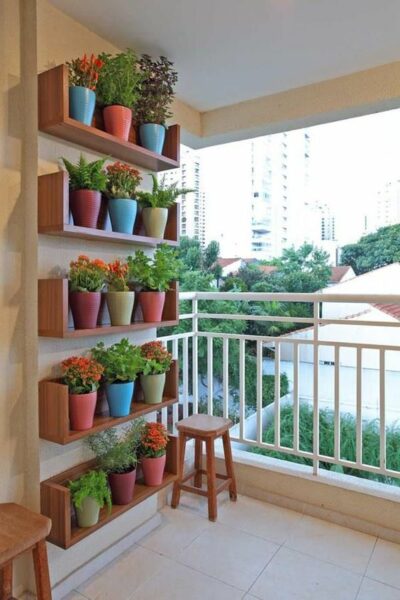
Many people may utilize open shelves for more than just books and culinary supplies. Planters may be set on open shelves that are fixed to the walls and also free-standing shelves to quickly create a vertical garden.
Plastic bottles that you can recycle.
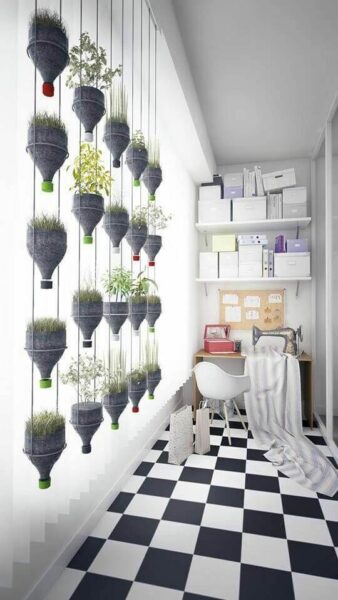
Considering the current environmental condition, plastic bottle recycling is an efficient waste reduction approach. You may paint them any color you choose to make them more attractive and beautiful.
Utilize mason jars.
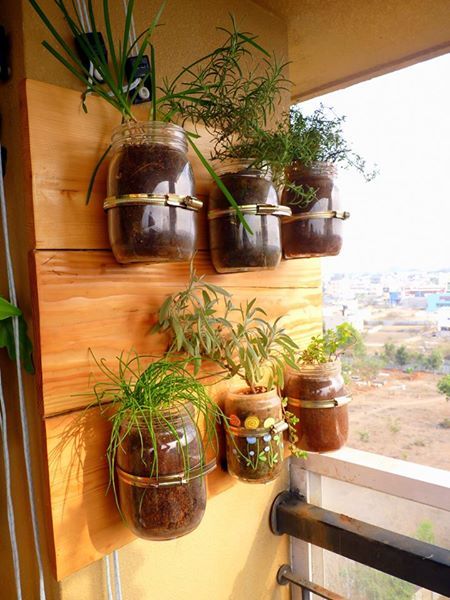
Mason jars are yet another DIY vertical garden option. They are more elegant than plastic bottles but need a little more attention in terms of plant size and weight.
Install a planter with a vertical frame.
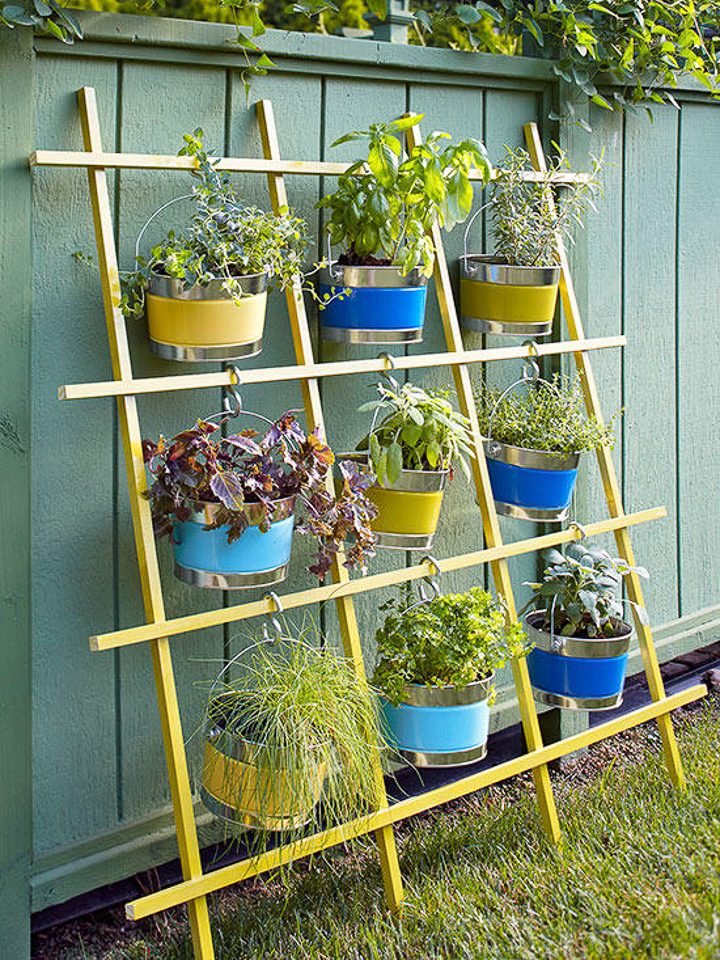
For a cute and colorful vertical garden frame, pick some strong wooden sticks that can hold some weight and nail them into a grid. Pick some hanging pots and you are done.
How do vertical gardens help the environment?
Vertical gardens are effective in filtering polluted air both inside and outside. They remove hazardous VOCs volatile organic compounds and other toxins such as benzene and formaldehyde. These gardens also help to reduce the carbon footprints of both human and vehicle emissions.
Vertical Gardening Disadvantages
- Living plant walls require maintenance.
- They can damage your home if you grow the wrong plants
- Irrigating vertical gardens can be difficult.
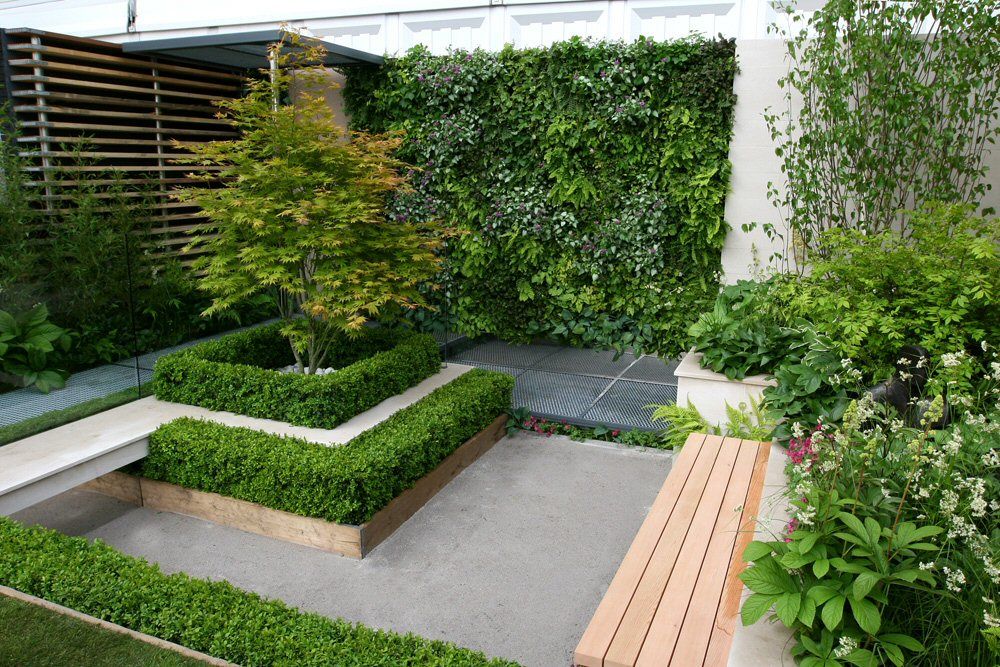
Vertical gardening is a sort of urban gardening that is well-suited to small spaces, particularly for beautifying walls and roofs in a variety of ways. This is a different technique to gardening that extends the reach of growing plants in a vertical setting. Urbanization has reduced the amount of horizontal space available for outdoor planting. Green walls are not only visually appealing, but they also assist to enliven the mood. Green walls may absorb hot gases in the air, decreasing interior and outdoor temperatures while also providing cleaner indoor air quality and a more visually pleasing environment.
